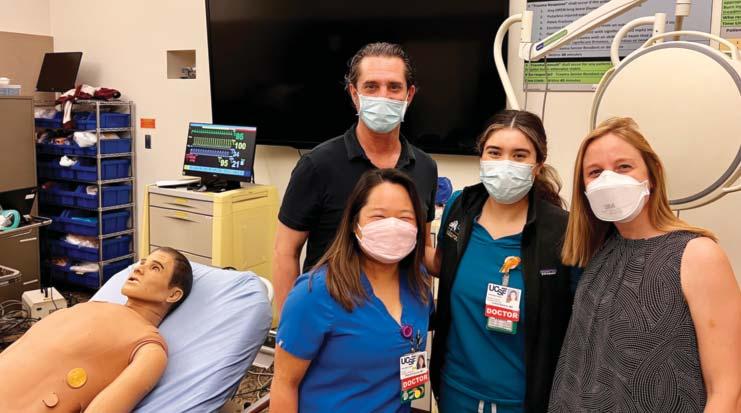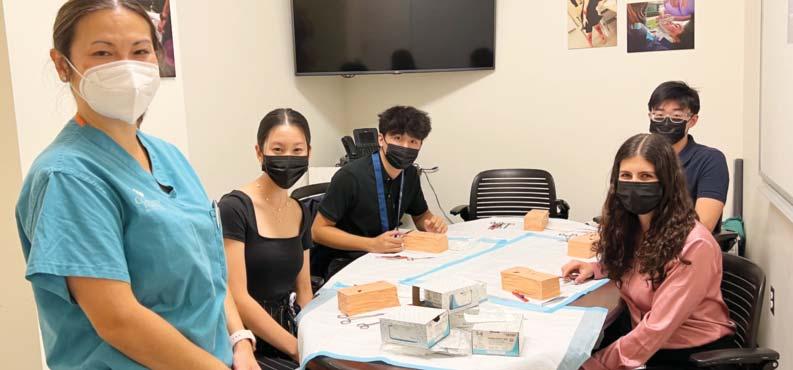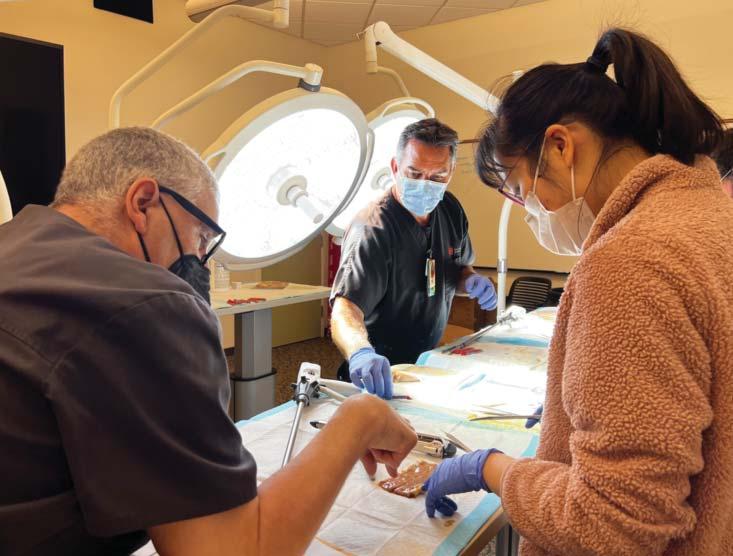
3 minute read
Clinical Skills
UCSF Fresno Clinical Skills Lab Opens Surgery Room and Upgrades Equipment for State-of-the-Art Training
By Barbara Anderson, UCSF Fresno Communications
Advertisement
UCSF Fresno continues to provide learning opportunities for medical students and trainees with state-of-the art improvements to the Clinical Skills Lab, which provides a safe environment for students, residents and fellows to learn and practice procedural skills, sharpen decision-making processes and build team leadership abilities.
Through role play and hands-on experience in a variety of simulated clinical environments, learners acquire knowledge, skills and attitudes needed for caring for patients in the real world. Learning activities cover the entire spectrum of patient care, from practice of history taking and physical examination to inter-professional team training and procedural skills practice. In 2021-2022, the Clinical Skills Lab at UCSF Fresno responded to increased needs for providing clinical experiences due to COVID-19 restrictions. Faculty relied more heavily on simulation to anchor their curriculum for students and trainees. An expansion of the Skills Lab allows for scenario-based training sessions, with reduced group sizes providing for social distancing. Separate simulation rooms are dedicated for Emergency Medicine/Surgery/ICU scenarios and for OB/GYN/Pediatric scenarios.
In 2021, Amy Kwok, MD, associate clinical professor of Surgery and Jessica Fujimoto, MD, clinical instructor of Emergency Medicine, were named to co-lead the Simulation Center to define its mission and guide its teaching and research goals. A new clinical skills and simulation technician, Mark Hammes, has been hired to work with Lee Hagerty, the simulation education coordinator, to manage, operate and maintain the Simulation Center’s advanced technology systems and vast array of simulation equipment.
The installation of a SimCapture™ learning management system has provided advanced education, assessment and training experiences in Graduate Medical Education. The state-of-the-art audio-visual and software system is designed especially for medical education and allows recording of each training session from multiple camera angles and includes data from patient monitors. These recordings can be reviewed and debriefed by faculty and trainees.
The SimCapture™ learning management system also gives medical students in the San Joaquin Valley Program in Medical Education (SJV PRIME) an assessment equitable to that at the UCSF School of Medicine.

The UCSF Fresno Clinical Skills Lab and Simulation Center boasts three high-fidelity mannequins that provide interactive learning opportunities for medical students, as well as training experiences for residents and fellows. A variety of specialized simulators called task trainers help learners practice a specific skill using lifelike models of parts of the human anatomy such as the head and neck, the torso, or an arm.
The mannequins also are used in community outreach, helping educate Emergency Medical Services (EMS) community partners at American Ambulance and to educate local high school students in the Doctors Academy program. UCSF Fresno’s Parkmedic Primary Certification Course uses the Simulation Center to provide park rangers with specialized medical training to create a safer environment for National Park visitors and employees across the country. And students in the Summer Biomedical Internship (SBI) for incoming high school seniors from Fresno County received hands-on experiences in suturing and cardiac arrest resuscitation at the Simulation Center. SBI is a health career pathway program matching students with faculty members who have or are developing research projects over the summer.
A new childbirth simulator mannequin, made possible by a grant from the Isnardi Foundation, is known as “Victoria,” and provides for simulations of a full range of obstetrical events to mimic human anatomy and physiology and create more realistic clinical scenarios. Trainees can experience true-to-life delivery and other OB/GYN scenarios while an integrated array of sensors tracks their performance for review later. Demand for the use of Victoria has increased greatly this past year. The UCSF Fresno OB/GYN program holds regular training sessions for its residents with Victoria as their patient. Using the Simulation Center’s operating room suites, they practice skills including IUD placement, Caesarean (C-section) deliveries and other difficult labor and delivery scenarios. Trainees in the Department of Emergency Medicine Residency Program utilize Victoria for C-section skills training and other emergency medical care scenarios. American Ambulance providers use many of Victoria’s built-in features to learn new protocols required for their critical care transport teams and to meet required EMS competencies.
Drs. Fujimoto and Kwok said the dramatic changes to the Clinical Skills Lab are only the beginning of planned expansions and advancements that revolutionize the uses of simulation in the training of medical students, residents and fellows.











